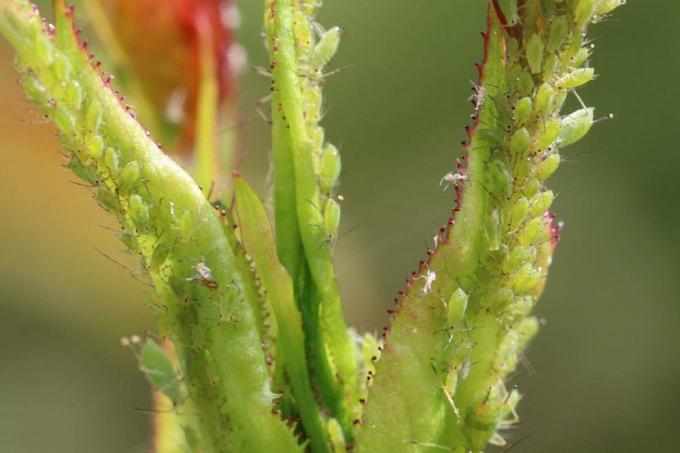
table of contents
- The causes of yellowing
- Environmental conditions
- Pests
- Diseases
- Treat yellow leaves
- Remedy for inadequate ambient conditions
- Location
- Nutrient supply
- water
As a particularly easy-care houseplant, the Lucky bamboo, or Lucky Bamboo, is found in many living rooms. Although this plant, which actually belongs to the dragon trees, is very easy to care for and in modern forms of husbandry even in If a water-filled vase thrives without any soil, it happens again and again that the leaves of the lucky bamboo turn yellow. With suitable measures, however, this damage to the Dracaena sanderiana can usually be quickly brought under control.
The causes of yellowing
Environmental conditions
Why a lucky bamboo can develop yellowing of the leaves has not been clarified in many cases. The following aspects, however, have a considerable influence on the growth and are therefore a useful starting point for avoiding future yellow leaves:
- a bright and warm location
- sufficiently high humidity
- sufficient nutrients, for example in the form of a fertilizer mixture for hydroponics
- As low-lime irrigation water as possible or Water in the vase
Pests
In addition, an infestation with pests is a possible cause of the local discoloration of the leaves. The aphid should be mentioned in the first place.
Aphids
Aphids attack the leaves of the Lucky Bamboo in order to get to the plant juices it contains. These can be easily done with home remedies, such as: B. with a detergent solution.

Diseases
If the plant continues to develop yellow leaf areas despite adapting the framework conditions and a targeted control for aphids, there is a possibility that, despite their robustness, they will be attacked by one of the few, rarely occurring diseases of the dragon tree is. Since the identification and control of the specific pathogen is hardly manageable for the normal plant keeper, there is actually in this case In exceptional cases, the possibility that yellow leaves indicate the beginning of the end and the plant can no longer be saved even with the aid of the remedies mentioned is.
Treat yellow leaves
Once the lucky bamboo has developed yellow leaves, it is important to act quickly. Because yellow leaves are far from being a death sentence for the Lucky Bamboo. First of all, it is of the highest priority to remove the yellow areas in order to prevent rapid spread or even putrefaction from the damaged leaf substance.
In the case of locally demarcated yellow areas, it may be sufficient to cut back the yellow discolored leaf. To do this, the sheet can be shortened around the affected areas with ordinary household scissors. Such a cut-back can also be visually beautifully designed without any problems. If, on the other hand, leaf areas that are too large are affected, you should remove the entire leaf immediately at its roots.

Remedy for inadequate ambient conditions
After the symptom has been resolved, make sure that the causes go away as well. Otherwise it is foreseeable that one leaf after the other will be affected, until ultimately the entire lucky bamboo can no longer be saved. Even if the actual cause of the yellowing of the leaves is mostly not related to a specific concern can be narrowed down, a general improvement of the environmental conditions usually helps with the following Measures:
Location
Even if the previous location has already been specifically selected for the Lucky Bamboo, it should checked again with regard to the three location factors brightness, warmth and humidity will. Even improvements that appear minor can be the decisive factor in avoiding yellow leaves.
Nutrient supply
Has sufficient fertilizer been used? Is the fertilizer used suitable for a lucky bamboo? It is worth taking a look at the instructions for use of the fertilizer available in order to check the suitability and frequency of the application. Since the lucky bamboo has no special requirements, normal fertilizer mixtures for indoor plants are sufficient when kept in soil. If, on the other hand, it is cultivated in a vase with water, a special fertilizer for hydroponics should be used, since the water itself does not have any supply in this regard.
water
Is there enough moisture? Especially when the Dracaena Sanderiana is "only" grown in a vase anyway, this question is superfluous. Then the type of water used in the vase or watering can can sometimes help prevent yellowing of the foliage. The plants prefer water with a low calcium content. If normal tap water has too high a proportion of lime, boiling it can be a solution. Alternatively, rainwater can be collected on the balcony or terrace and used for the lucky bamboo.
